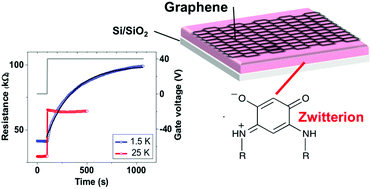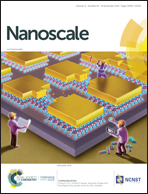Tuning graphene transistors through ad hoc electrostatics induced by a nanometer-thick molecular underlayer
Abstract
We report on the modulation of the electrical properties of graphene-based transistors that mirror the properties of a few nanometers thick layer made of dipolar molecules sandwiched in between the 2D material and the SiO2 dielectric substrate. The chemical composition of the films of quinonemonoimine zwitterion molecules adsorbed onto SiO2 has been explored by means of X-ray photoemission and mass spectroscopy. Graphene-based devices are then fabricated by transferring the 2D material onto the molecular film, followed by the deposition of top source–drain electrodes. The degree of supramolecular order in disordered films of dipolar molecules was found to be partially improved as a result of the electric field at low temperatures, as revealed by the emergence of hysteresis in the transfer curves of the transistors. The use of molecules from the same family, which are suitably designed to interact with the dielectric surface, results in the disappearance of the hysteresis. DFT calculations confirm that the dressing of the molecules by an external electric field exhibits multiple minimal energy landscapes that explain the thermally stabilized capacitive coupling observed. This study demonstrates that the design and exploitation of ad hoc molecules as an interlayer between a dielectric substrate and graphene represents a powerful tool for tuning the electrical properties of the 2D material. Conversely, graphene can be used as an indicator of the stability of molecular layers, by providing insight into the energetics of ordering of dipolar molecules under the effect of electrical gating.

- This article is part of the themed collections: Advisory Board research selection and 2019 Nanoscale HOT Article Collection


 Please wait while we load your content...
Please wait while we load your content...